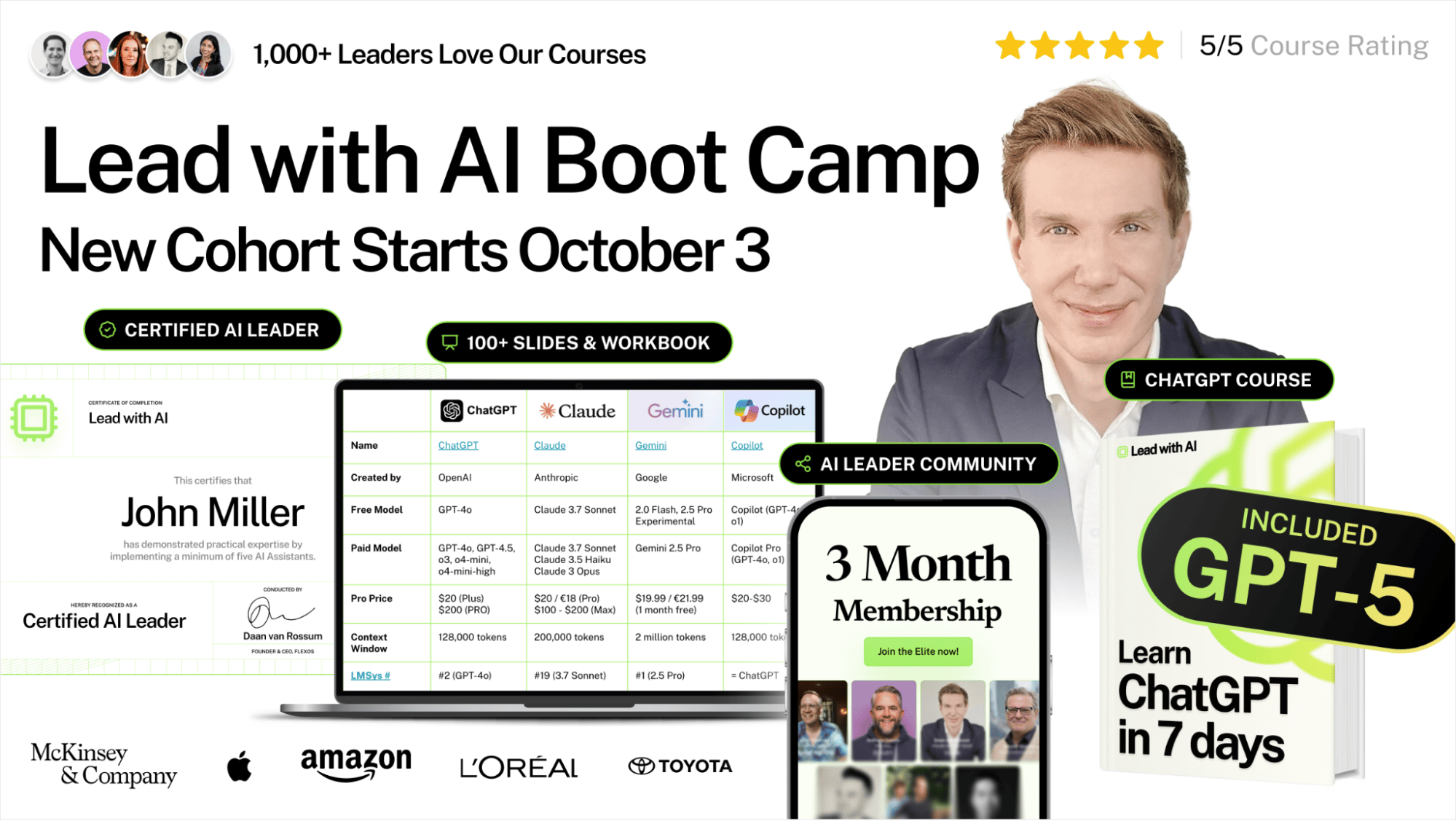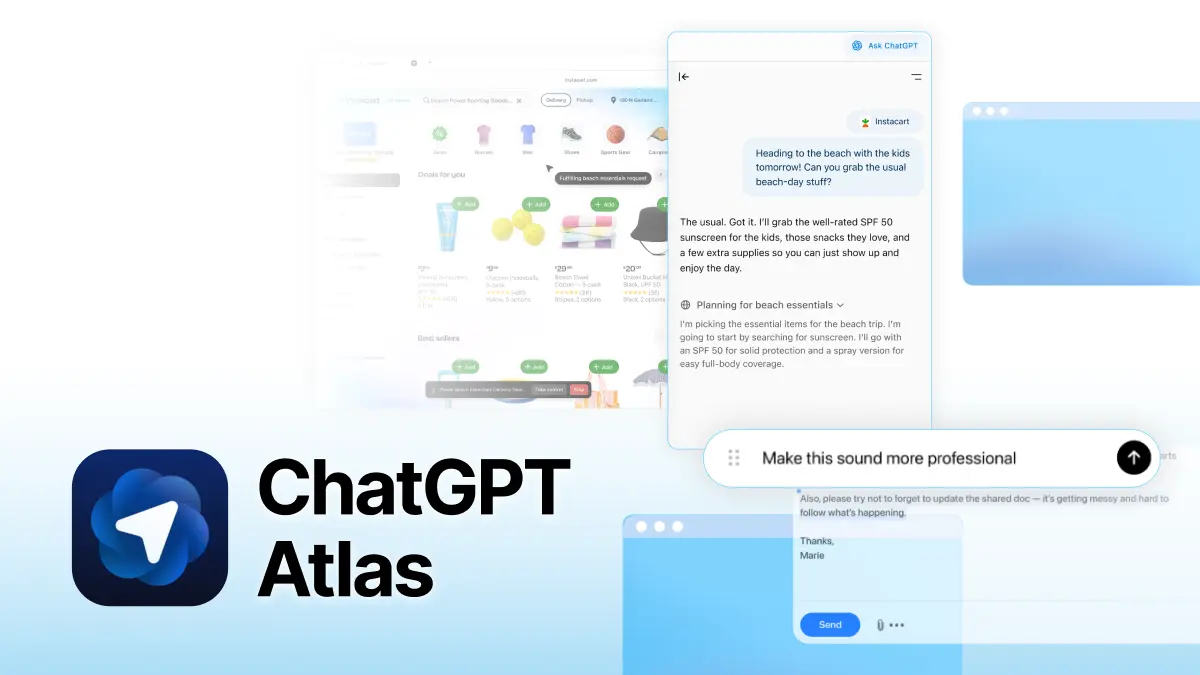
OpenAI: 23 Things Every AI Leader Must Do
This week, OpenAI published a new white paper to demonstrate what AI leadership looks like in 2025.
The foreword infographic on page 2 distills the shift: costs are collapsing, capability is compounding, and adoption is compounding even faster:
- GPT-3.5-class compute costs down 280× in 18 months
- 5.6× growth in frontier model releases since 2022
- Consumer uptake is four times faster than the desktop internet.
- Early adopters are already growing revenue 1.5 times faster than peers.
These breakthroughs are followed by the harsh reality: many companies are not even a tenth of the way toward AI leadership.
In the whitepaper, OpenAI lists 23 things that make an AI leader.
As Daniel Whittemore and others have commented, this is not “pie in the sky” futuristic AI leadership, but a reasonable expectation for non-technical leaders.
So how do you stack up?
The checklist: 23 Things Every AI Leader Must Do
If you’ve wondered if you are where you need to be in terms of AI leadership, OpenAI gives you the answer.
Based on the paper, here’s what you need to know, be, and do to be an “AI Leader”:
Align (set the bar and show it)
- Tell a clear “why AI, why now” story tied to competitive advantage and customer expectations.
- Publish a measurable, company-wide AI adoption goal and wire it into OKRs and planning.
- Role-model usage by regularly sharing how you use ChatGPT; normalize experimentation.
- Run functional leader sessions to connect AI to each team’s workflows and surface use cases.
- Keep alignment visible with pulse surveys and a public dashboard tracking adoption progress.
Activate (make skills and experiments routine)
- Launch structured, role-specific AI training tied to real workflows; embed learning in daily work. (In the EU, this is mandatory next year.)
- Stand up an AI Champions network to mentor peers and sustain momentum.
- Institutionalize experimentation: protected time, no-code hackathons, and fast approvals.
- Link AI engagement and shipped use cases to performance, promotion, and recognition.
- Track adoption & learning (DAU/WAU, GPT shares, training completions) and support lagging teams.
Amplify (turn scattered wins into company muscle)
- Launch a single AI knowledge hub with training, policies, prompt/workflow libraries, and an events rhythm. Name an owner.
- Share wins on a cadence—show steps to replicate, not just headlines.
- Build communities of practice (Slack/Teams/CoE) and reinforce in team meetings so recognition fuels reuse.
- Measure spread: aim for multiple new wins shared monthly; track participation in AI forums/channels.
Accelerate (remove friction from idea → pilot → production)
- Unblock fast access to tools and clean data; kill multi-week approvals for basics.
- Run a clear intake + prioritization process so teams submit ideas, get quick feedback, and avoid duplicates.
- Stand up a small, executive-sponsored AI council to unblock cross-functional issues and fast-track high-potential initiatives.
- Reward shipped impact—reinvest time/budget in high-impact teams to compound gains.
- Manage by metrics: time-to-production, stuck pilots, and approval/request cycle times.
Govern (go faster because it’s safer)
- Publish a simple Responsible AI playbook focused on “safe-to-try” vs “escalate,” written in plain language.
- Offer a policy GPT that answers common questions and routes sensitive issues to compliance.
- Run lightweight quarterly reviews/audits to keep rules current with tools, risks, and regulations.
- Validate that governance accelerates, not slows: track review delays linked to governance steps and tune the process.
Reading through this list, how many of these can you realistically check off?
If you’re not at that bar, then below is your catch-up playbook to get yourself and your organization to “baseline” in weeks, then keep climbing. (Rather do it with a group of global peers? Enroll in our Lead with AI Executive Boot Camp, next cohorts on October 3 and November 14.)







